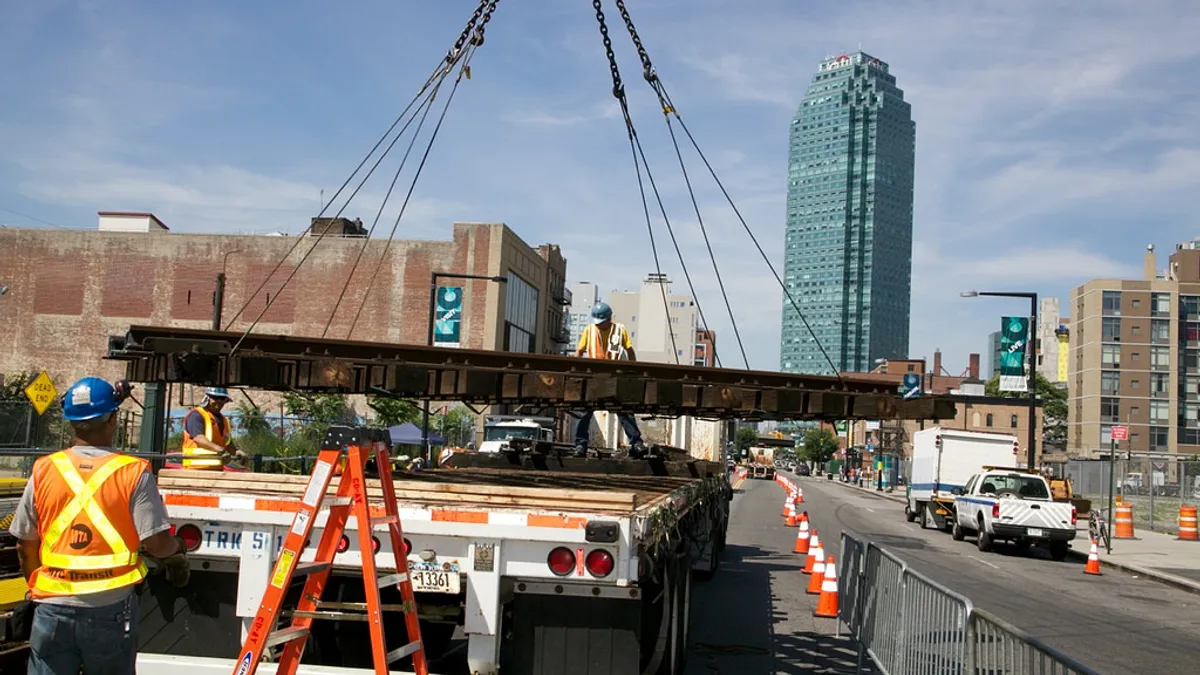Dive Brief:
- Gilbane Building released its Winter 2015-2016 Market Conditions in Construction report, highlighting the current state of the industry as well as providing predictions for future performance. Gilbane said the 2015 "spending boom" was driven by nonresidential construction and expects spending grew 10.7% for 2015, to $1.1 trillion, and spending will rise 9.7% for 2016.
- Gilbane predicted total construction spending growth from 2014 to 2016 may reach 30% — setting a new record-high growth period.
- Despite near-record growth, Gilbane said concerns about an adequate supply of skilled workers has driven up home prices and could lead to higher wage rates. In addition, Gilbane warned that as work volume increases over the next few years, productivity will decline due to longer working hours, more work days and less qualified workers.
Dive Insight:
The construction industry added one million jobs in five years and 800,000 jobs in the last three years, according to the report. Ed Zarenski of Construction Economics, and also a Gilbane analyst, said that to support forecast spending, the industry needs to see job gains of 500,000-600,000 in 2016-2017.
Recently, the National Association of Home Builders/Wells Fargo Housing Market Index surveyed builders about the problems they expected to face in 2016, and 76% of builders said cost and availability of labor topped the list.
This result is a continuation of the discussion around an adequate supply of labor in the industry. Construction saw impressive gains at the end of 2015, with the addition of 45,000 jobs in December, 46,000 in November and 31,000 in October after stagnant numbers for most of the year. During the surge of employment, industry experts said they believed that a softening of the energy sector and higher wages were luring more workers into construction.
However, the industry added only 18,000 jobs in January, and the construction unemployment rate rose to 8.5%, indicating construction companies need to up their games and find new ways to bring workers aboard.














